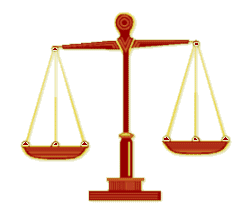Trust law facts for kids
A trust is a special way to manage property or money. It's like an agreement where one person, called the settlor, gives their property to another person or group, called the trustee. The trustee then holds and manages that property for the good of other people, known as the beneficiaries. Trusts are common in countries that use English law. They have been used for a very long time.
What is a Trust?
When someone puts property into a trust, they give some control over it to the trustee. This separates who legally owns and controls the property from who benefits from it. This setup helps manage property if the original owner is away, unable to make decisions, or has passed away. Trusts are often created in wills. They help decide how money and property will be handled for children or other family members.
The trustee gets the legal right to the trust property. But they have a duty to act only for the good of the beneficiaries. The benefits from the trust belong to the beneficiaries. Trustees can be paid for their work and get their expenses covered. However, they must give all other profits from the trust property to the beneficiaries. If a trustee uses the trust for their own gain, it's called "self-dealing." Courts can reverse such actions and order profits to be returned.
A trustee can be an individual person, a company, or even a public group. There can be one trustee or several working together. The trust follows rules set when it was created. In most places, these rules are written in a trust agreement or deed.
Trusts can offer several good things:
- They can help avoid probate, which is a court process for handling a person's assets after they die.
- They help plan for future events that might affect property.
- They allow you to control what happens to your assets after you pass away.
- They might help reduce future taxes.
- They can keep financial matters private, unlike probate court.
- They can plan for your own disability or help support a family member with special needs.
Trusts Made After Death
Testamentary trusts are trusts that start after the settlor has died. These trusts are usually described in the settlor's will. They allow the settlor to set conditions for how the property is used. They can also spread out payments from the trust over time.
A testamentary trust is not created automatically when someone dies. It must be set up through their will. Because it's part of a will, the property usually has to go through a court process called probate first.
Trusts Made During Life
A living trust can be more complex than a testamentary trust. Many people use living trusts to try and avoid probate. However, even with a living trust, some of a person's property might still need to go through probate after they die. Also, you cannot use a living trust to name guardians for your children. That must be done in your will.
Living trusts can manage property while the settlor is alive and after they pass away. If the settlor becomes unable to manage their property due to an accident, illness, or being unavailable, the trustee can manage it for them. The trustee will follow the rules set out in the trust agreement.
Images for kids
See also
 In Spanish: Fideicomiso para niños
In Spanish: Fideicomiso para niños



